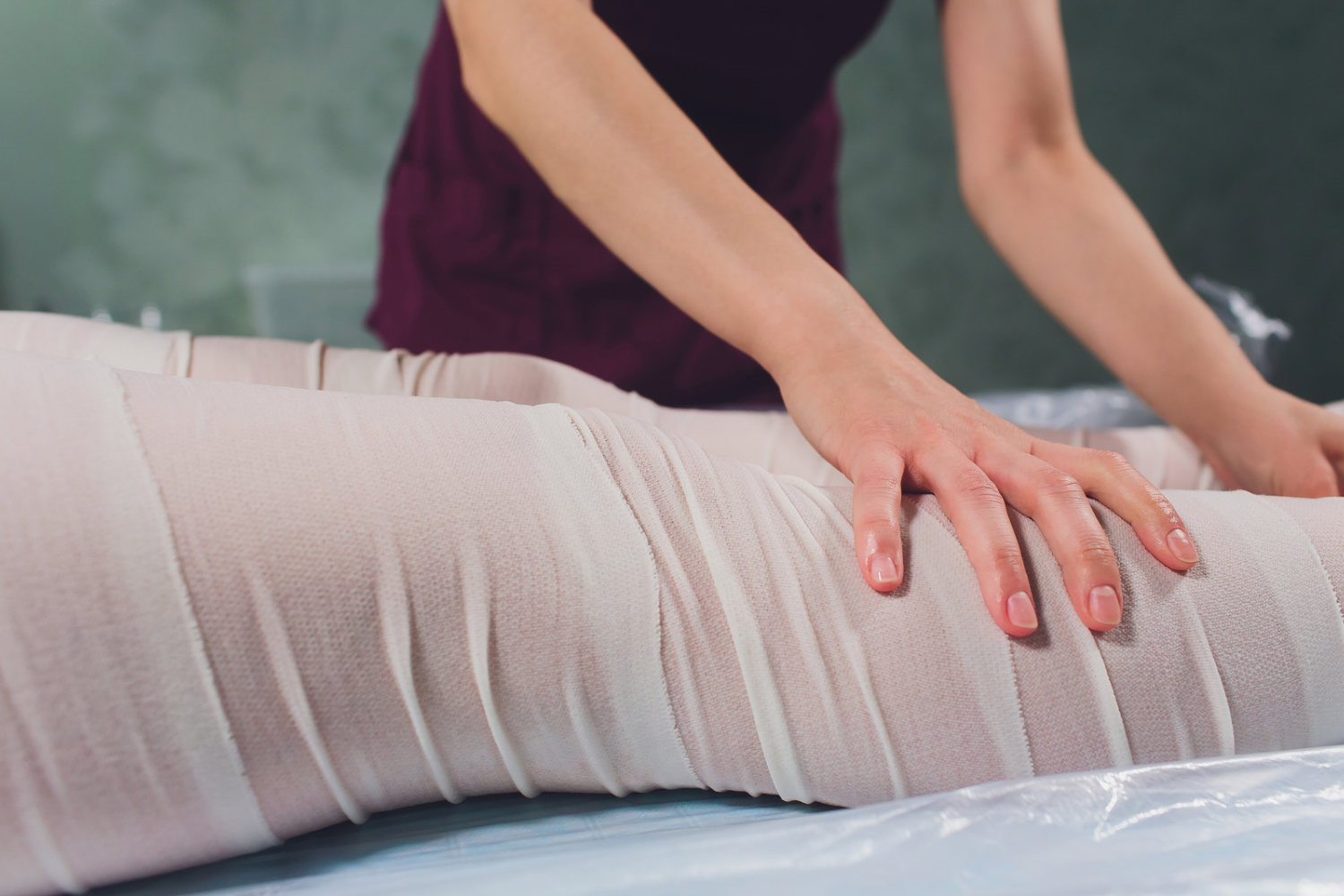Wrapping is a special type of effect on human skin due to the absorption of biologically active ingredients in the epithelium. The most frequently used ingredients are medicinal mud, seaweed, clay and other natural components. There are many options for wrapping, including wrapping with a wet cloth.
Wrapping at home
The material for wrapping can be completely different – made with your own hands or in the form of factory gels or creams. Despite the wide range of wrapping products on store shelves, most often the main active ingredient is clay or algae. And auxiliary substances are various stabilizers, preservatives and texture stabilizers.
To choose the appropriate option, you need to understand what result you personally want to achieve – tighten the skin, get rid of orange peel or increase local blood circulation. And based on this, pay attention to those components that provide just such an effect.
Wrapping can be complete (from the neck to the heels) or partial, when the gel is applied locally to separate parts of the body. For example, to combat orange peel, bandage the legs, buttocks, and lower abdomen. There are several types of wrapping, which differ in the technique of conducting:
- cold;
- warm.
Due to their action, they help to get rid of excess weight and cellulite, strengthen the work of the lymphatic drainage system. Cold wraps are recommended for those who suffer from swelling in the legs and salt deposits in the joints. Procedures under the influence of high temperatures help to clean the skin, tighten reliefs and rejuvenate.
The number of sessions in one course can be from 1 to 20. It depends on the neglect of the case, the intensity of the effect of the drugs used.
Procedure rules
When carrying out the procedure with factory gels or creams, you should strictly follow the manufacturer’s instructions, which are usually indicated on the package or in the attached insert. Despite the fact that outwardly wrapping is a rather passive procedure, it has a significant impact on the body and has a number of performance rules, contraindications and restrictions.
When wrapping in salon conditions, you need to follow some rules:
- clearly and as comprehensively as possible describe to the master what effect you want to achieve;
- fully answer the specialist’s questions during the wrapping, especially if they concern your well-being and health.
- The master will do everything else for you. If the wrapping is done with your own hands at home, it is important to listen to your own feelings. If discomfort or burning occurs, stop immediately, wash off the product with a large amount of water and, if necessary, add a wet towel to the burning areas.
Wrapping at home looks like this:
- Spread a warm blanket or blanket on any convenient horizontal surface. On top of it, lay oilcloth or other water-repellent fabric that does not absorb water and other means.
- Do a body scrub or peeling before the procedure. This increases blood circulation, cleanses the skin of keratinized and dead cells, and opens the pores. Thus, the effect of the active components of the product increases. Prepared skin becomes smoother.
- Apply the mass on the body, distribute it evenly. Then lie down on the previously prepared film and wrap the body. Cover yourself with a warm blanket on top. It is necessary, as the assimilation of substances is accelerated due to the preservation of heat. You need to lie in this position for 15 to 45 minutes.
- After the specified time, open and wash off the product with warm water.
The technique of conducting may differ in each type. For example, during cold wrapping, you do not need to cover yourself with a blanket at all, and when bandaging the body with a wet cloth, you do not need a film.
It is important to drink a glass of water after bandaging and, if possible, not to strain the muscles during the day.
Before carrying out the procedure, you need to make sure that there are no contraindications. These include:
Contraindication
- allergic reactions and individual intolerance to mask components;
- neoplasms on the skin;
- chronic respiratory diseases;
- diseases of the cardiovascular system;
- inflammation and varicose veins;
- pregnancy and breastfeeding;
- acute inflammatory processes;
- cold and body temperature above 37 degrees.
It is very important to follow the instructions when mixing the mixture, to avoid burning and other unpleasant sensations. Similar symptoms may indicate a burn or exacerbation of chronic diseases.
Benefits of the procedure
Using the hot method, you can get rid of cellulite, fight obesity, and reduce volume in certain problem areas. In this case, wrapping is used together with other effects in a complex way – together with sports, proper nutrition and increased physical activity.
The cold method helps with swelling and fatigue. It reduces heaviness in the legs and pain.
Body wrap in 4U Body&Skin salon
Of course, it is more reliable to go to a clinic where professionals and doctors work. They can carry out cold and hot wraps, combined procedures. A popular wrap on Austrian-made STYX cosmetics. The special formula allows you to act on the skin gently, penetrate deep into the layers of the epidermis.
After the procedure, it is recommended to do a lymphatic drainage massage Endospheres Therapy. You can sign up at any convenient time at the 4U Body&Skin salon, we are located in Philadelphia.
